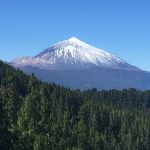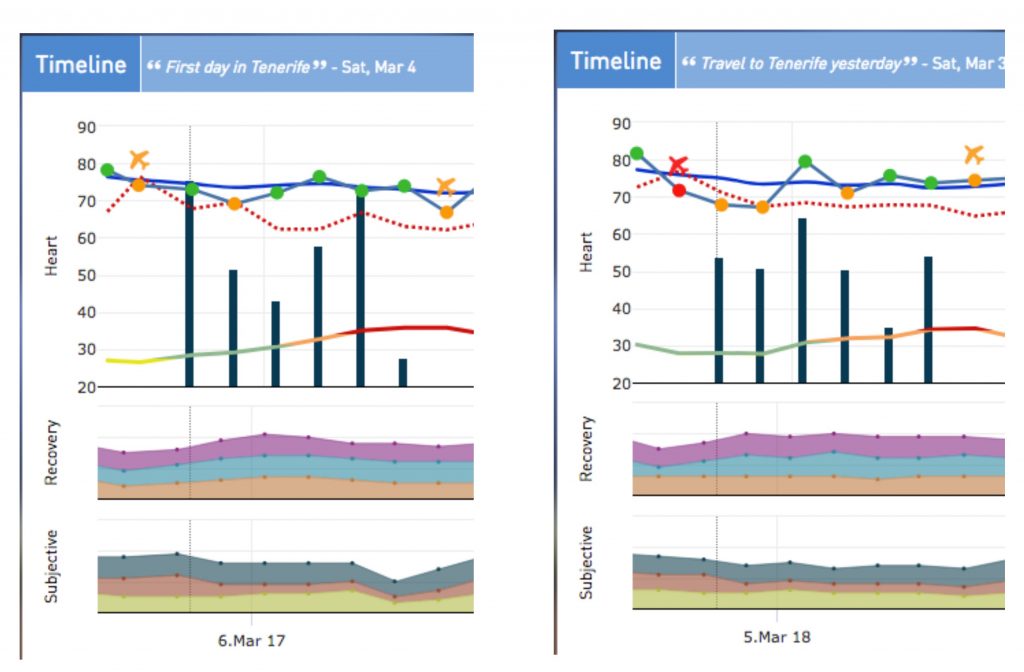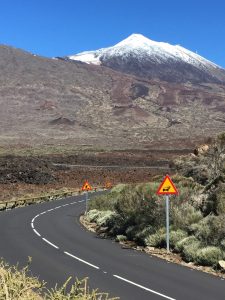By Simon Wegerif

Two years in a row now I have done the same training camp at the same time of year. The location is Tenerife in the Canary Islands. Being off the West coast of Africa, the climate is warm, even in early March, and the excellent paved roads extending from sea level to the main crater of Mt Teide at 2100m give continuous climbs of 18 – 48 km i.e. some of the longest in Europe. These will take anywhere from 1 to 4 hrs depending on which of the 5 main routes you select and how fit you are.
The fact that I’ve now done this a couple of times (with the same riding buddy Simon George) allows me to make comparisons between what we did, and how our bodies reacted, as well as me gaining a little wisdom on conducting training camps that may help those doing one for the first time.
2017 vs 2018

![]()
Comparing the two years in the ithlete Pro Timeline charts and data table below, although the total training loads and accumulated climbing are similar, the profiles are rather different. A very big first day in 2017 meant that by day 5, the acute:chronic training load ratio exceeded 1.5, coinciding with very sore muscles and essentially writing off day 6 because we were so tired. 2018 was better paced and were able to complete good rides all 6 days before reaching the same acute:chronic ratio, and avoiding extreme fatigue at the end. Researchers have found the 7 day HRV average (i.e. ithlete blue baseline) to best represent the effect on the body of accumulated load and that looked to be the case here as well: in 2018 a load of 1623 gave a fall of 3.5 in the HRV baseline, whereas in 2017, a 10% higher load also gave a 10% higher fall in HRV baseline.

My tips for a successful camp are as follows:
Getting there and preparing for the week
- Avoid stressful situations before and during travel. As I found out this year after driving through unexpected and deep snow to reach the airport, a red HRV will affect your ability to perform and recover for the first couple of days.
- Make sure bike is clean and well packed in box. It will be mistreated by the airline and you don’t want to get dirty reassembling it once you arrive.
- Set your saddle a little bit lower if you are doing a lot more climbing than usual. It makes the pedal action more natural and less painful after several days in a row.
Structuring the week
- Don’t do too much on the first day, no matter how tempting it is to explore. Your body isn’t ready for it and will thank you for easing in.
- If riding in the mountains, check the weather forecast for the mountains you are going up. Getting caught unawares is no fun and can be dangerous (incl. winds over 18 mph!).
- Have one easier day mid-week.
- Expect your mood to deteriorate during a high-volume camp as the volume accumulates. Make allowances for others having mood swings too, especially when some things don’t go to plan.
- Your resting heart rate will likely trend downwards and you will likely find it increasingly hard to raise during training. This means you are getting tired and your location on the ithlete Pro Training Guide will head towards the bottom left or right.
During workouts
 Don’t bring your best kit. Wear and tear on kit is considerable and you’re not racing now.
Don’t bring your best kit. Wear and tear on kit is considerable and you’re not racing now.- Take arm warmers and gilet even if it’s warm when you set off, especially if heading upwards as the air temperature decreases 6C every 1000m.
- Eat and drink every 15-20 mins and in general get enough carbs at breakfast and dinner. You may be using over 2000 kCal on a long ride and these need to go back in if your performance isn’t going to suffer the next day.
- Wear clean kit every day and give your bike a little attention after each ride. Your buddies and bike will thank you.
- Set your own pace when climbing, and exceed Zone 2 very rarely. Regroup at the top or at pre-agreed milestones.
- Expect some shortness of breath if going above 5000 ft (1700m) if you’re not used to it. You may feel slightly dizzy and nauseous above 7000 ft (2000m) the first time.
- You may start some days with very tired legs. This will improve after 45-60 mins.
- Use sunscreen and reapply every couple of hours if you sweat a lot, especially if riding at altitude where the UV is higher
and the lower temperature may lull you into a false sense of security.
Post-ride recovery
- If there is a cold pool or the sea nearby, sit in it for as long as you can after every ride. Your muscles will feel much more relaxed and recovered next day.
- Don’t drink too much at dinner. One glass of wine or beer is enough to be sociable and won’t add to dehydration.
- Get a good night’s sleep every night and nap late pm if you can.
I hope you find these tips useful, and please feel free to share your own in the comments below.
